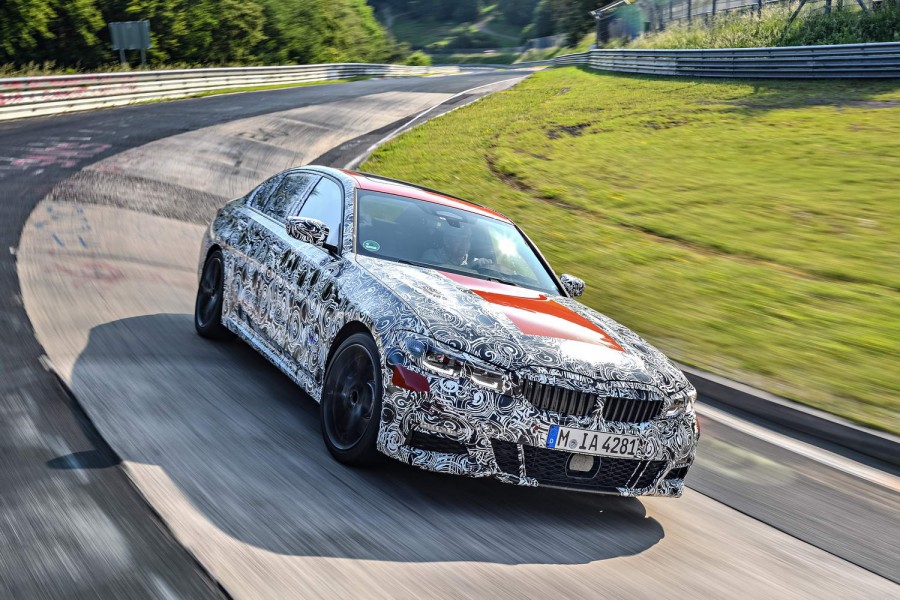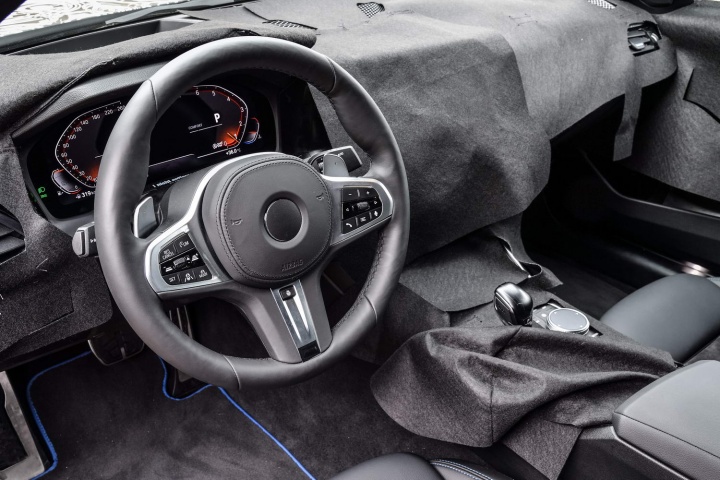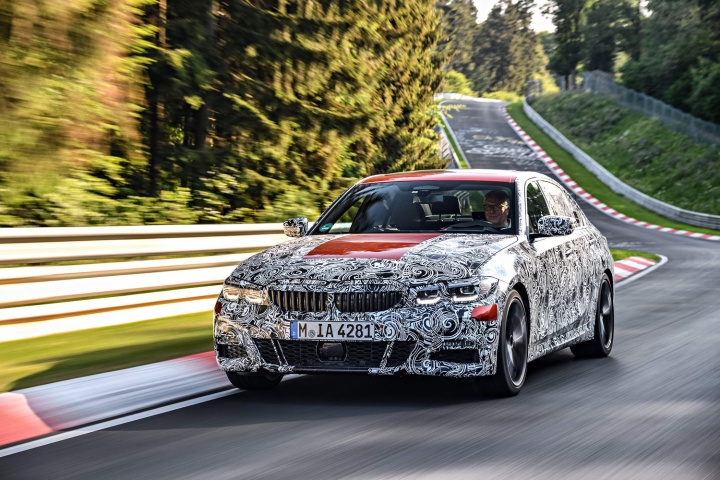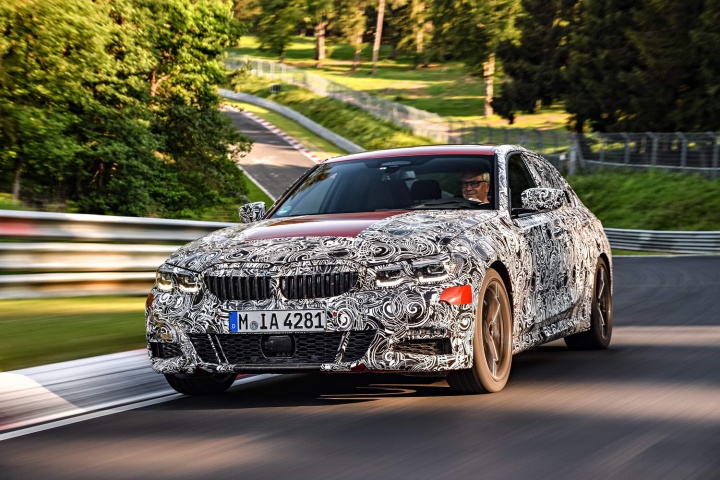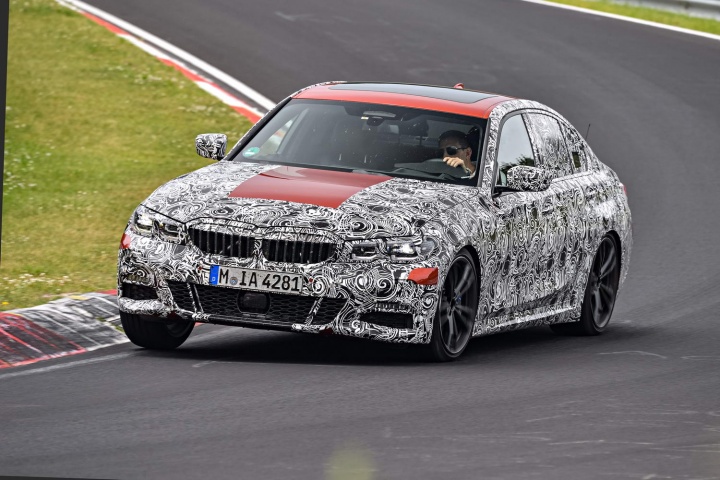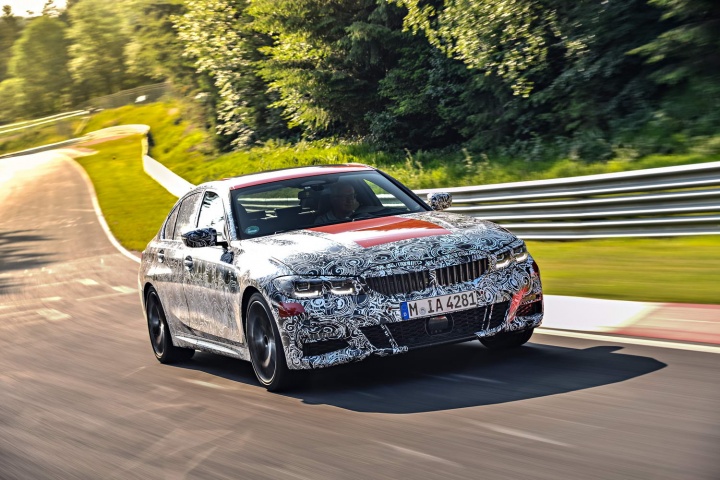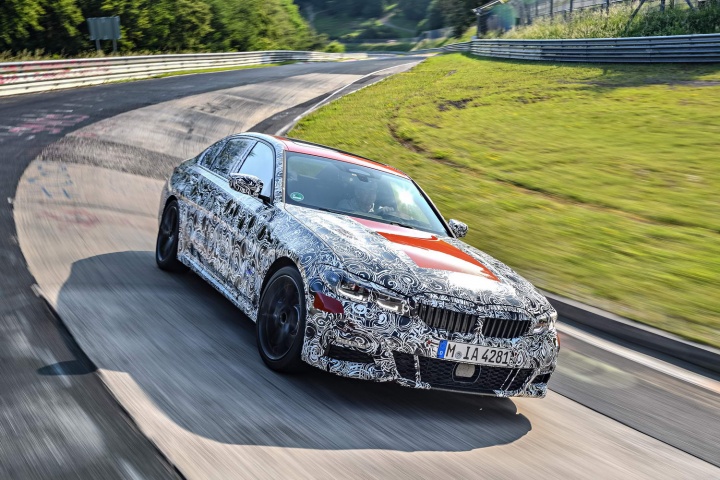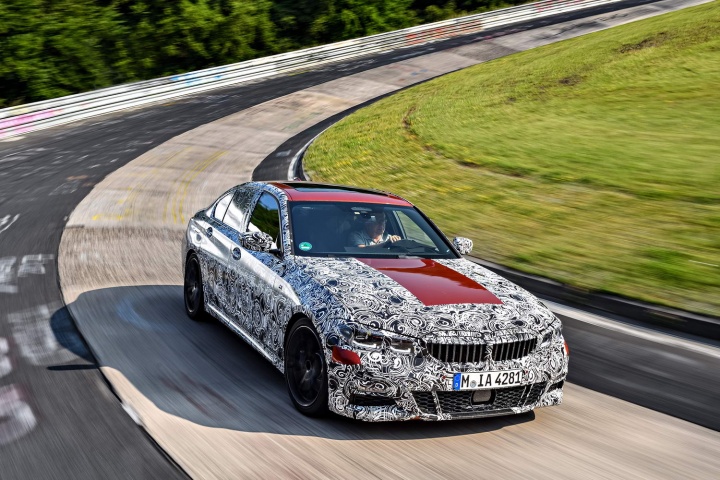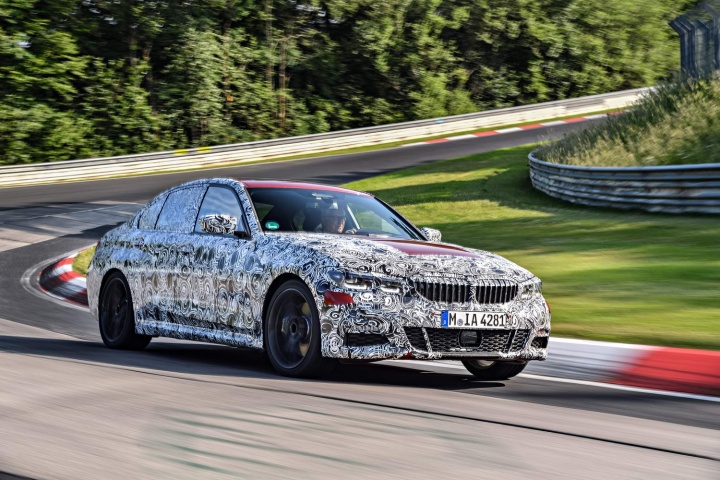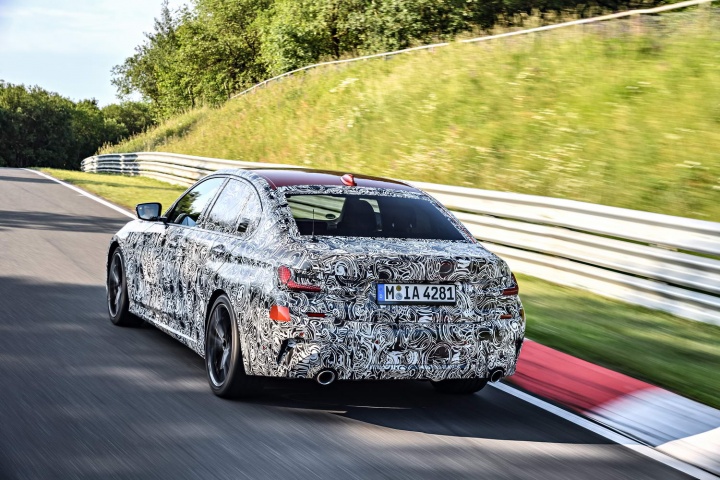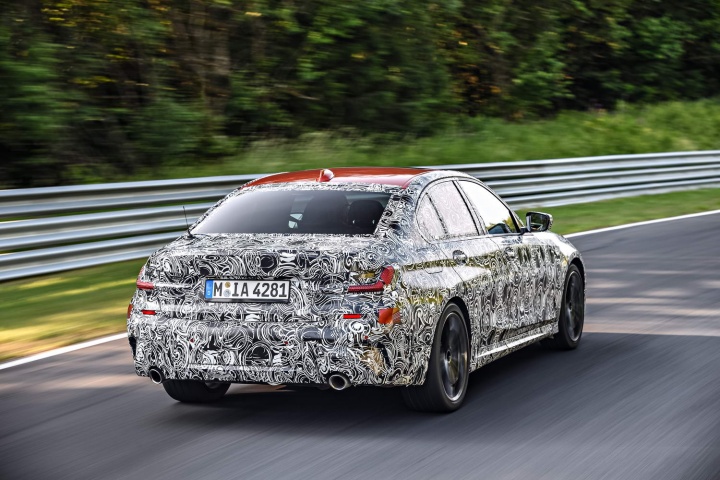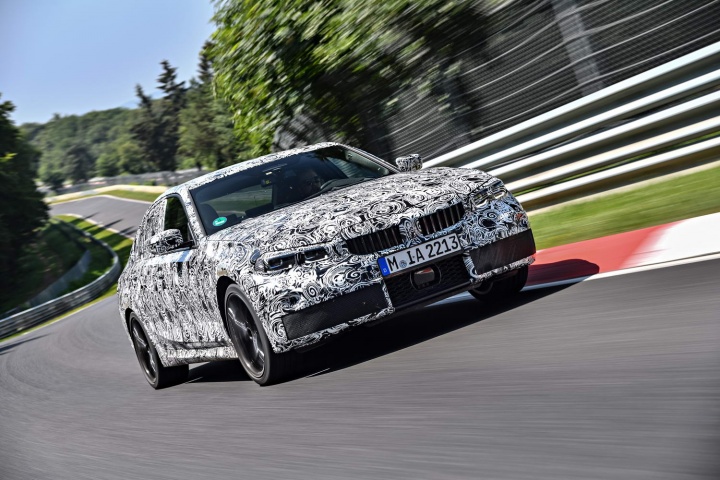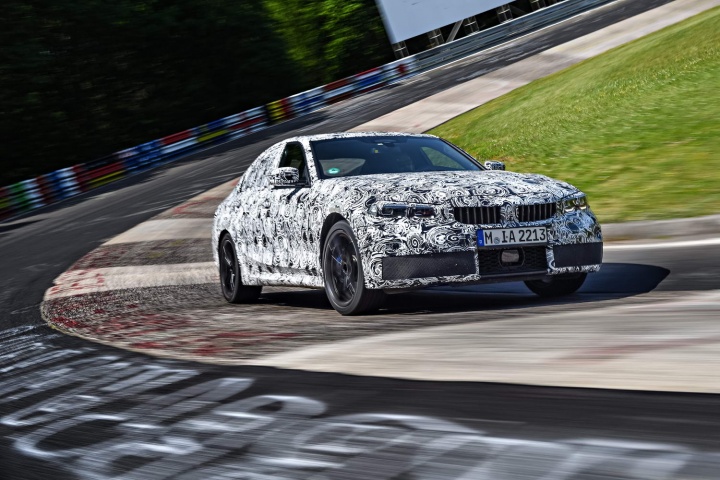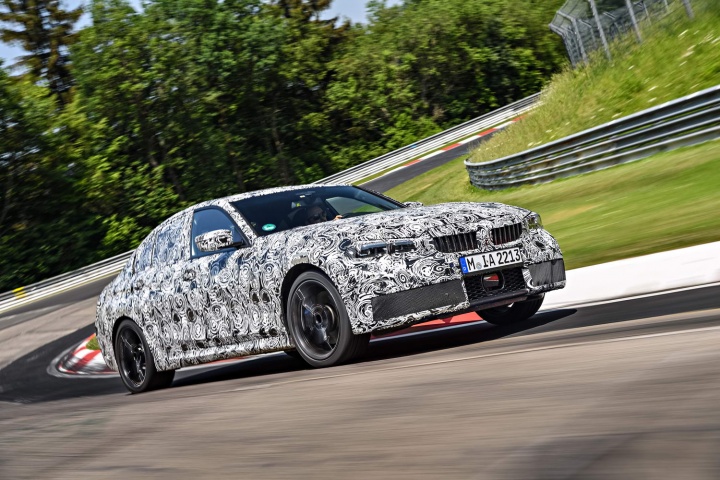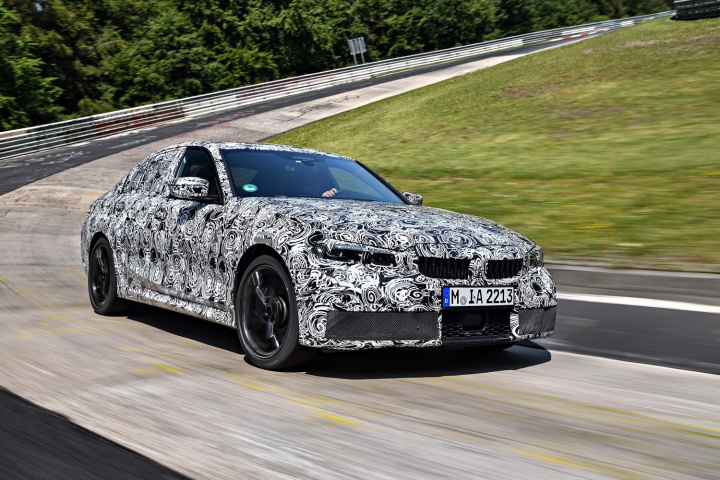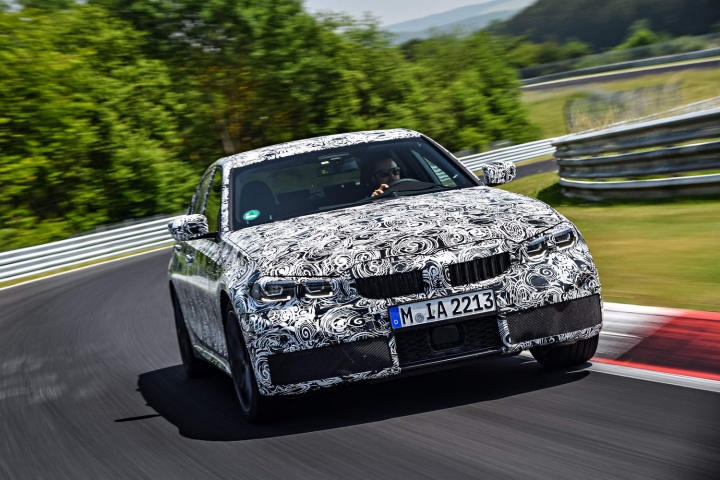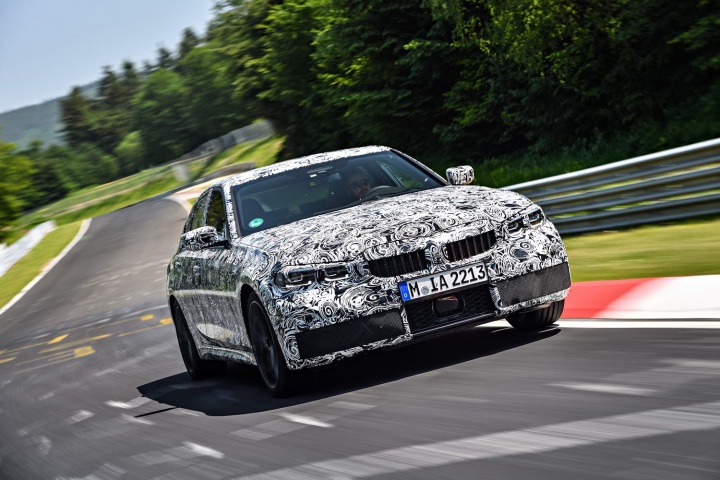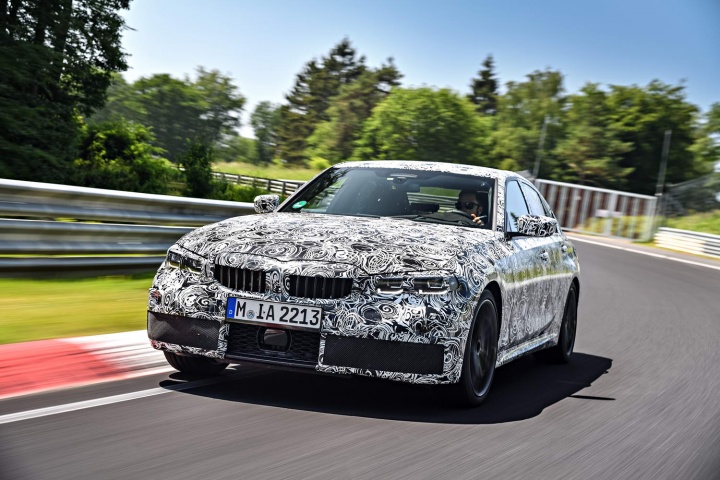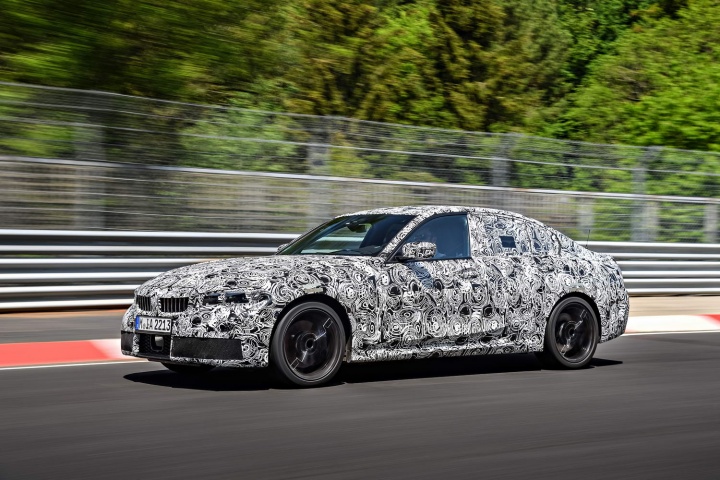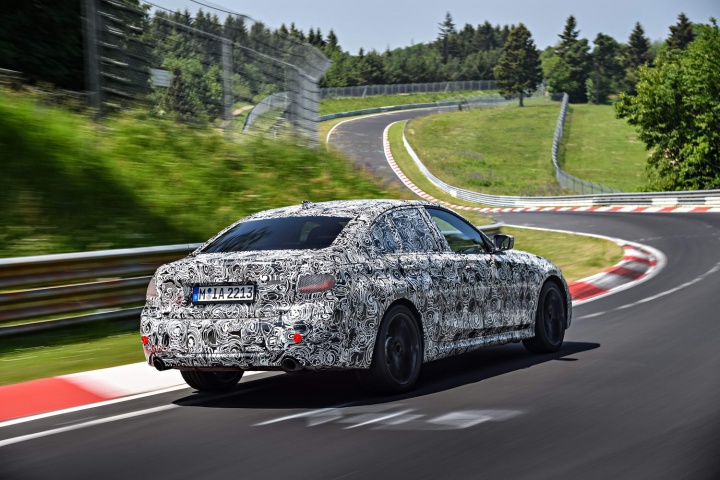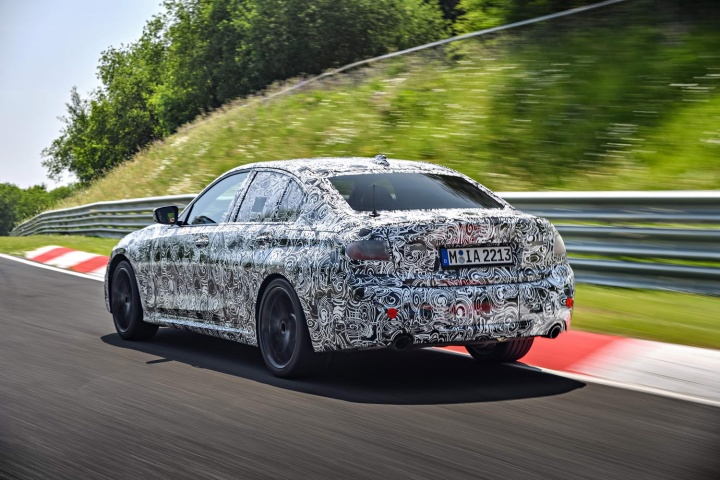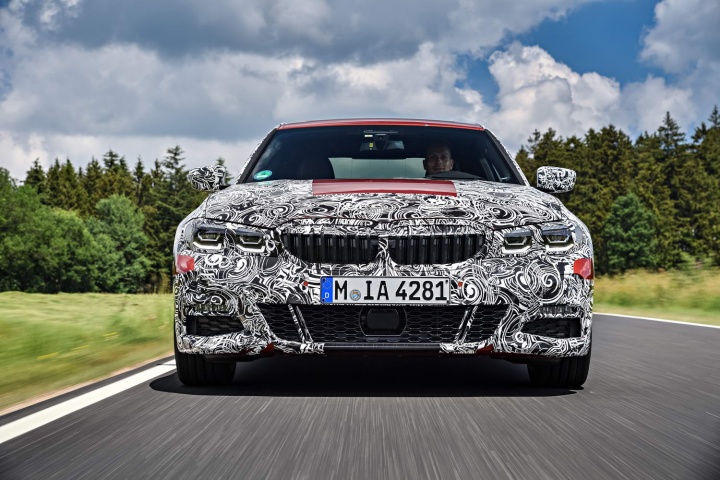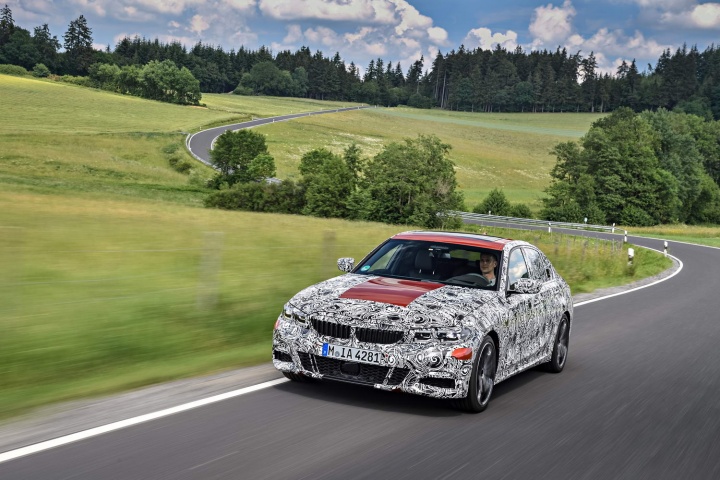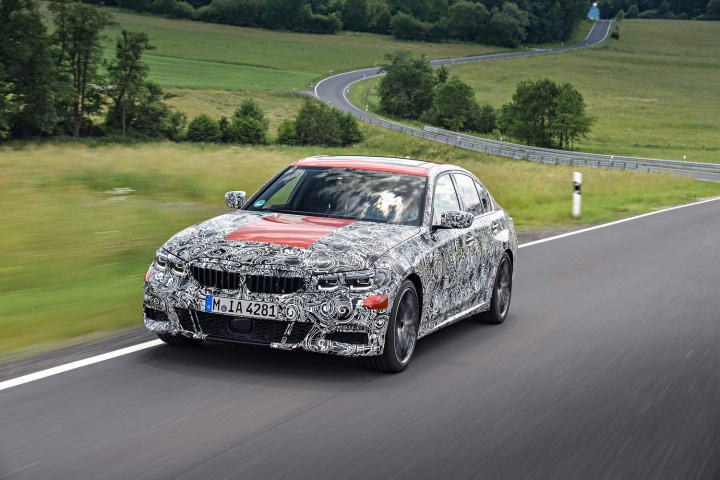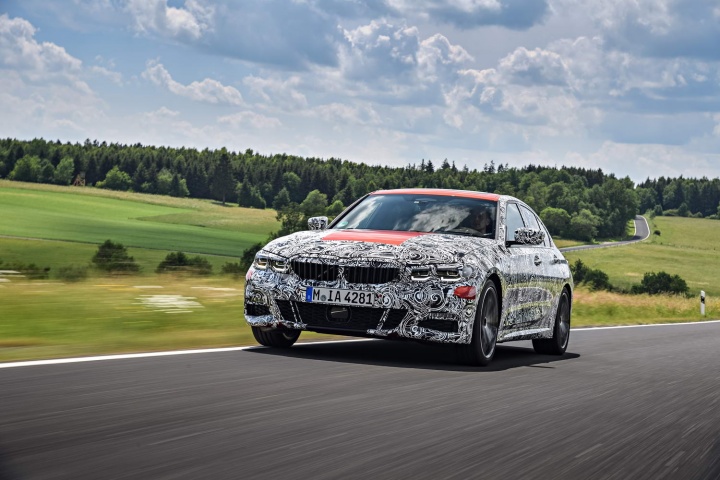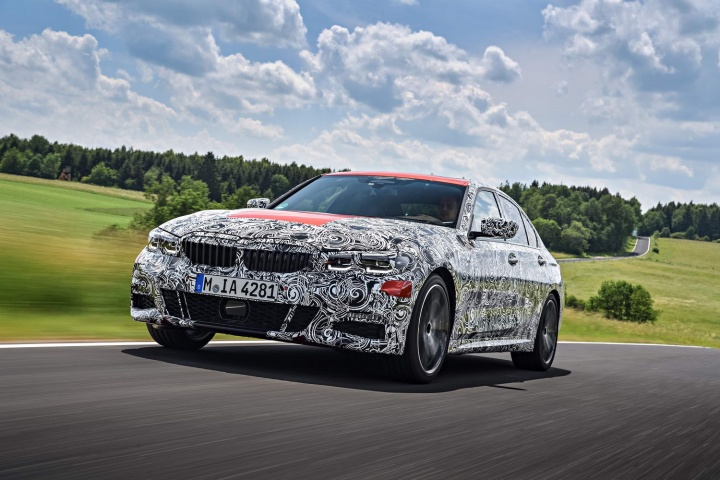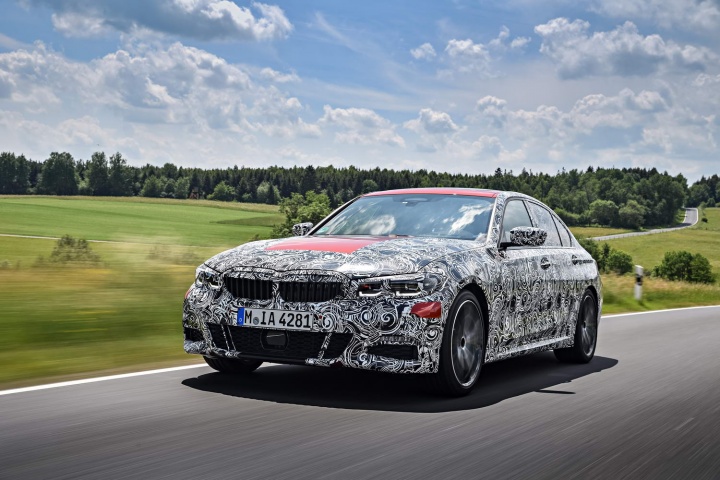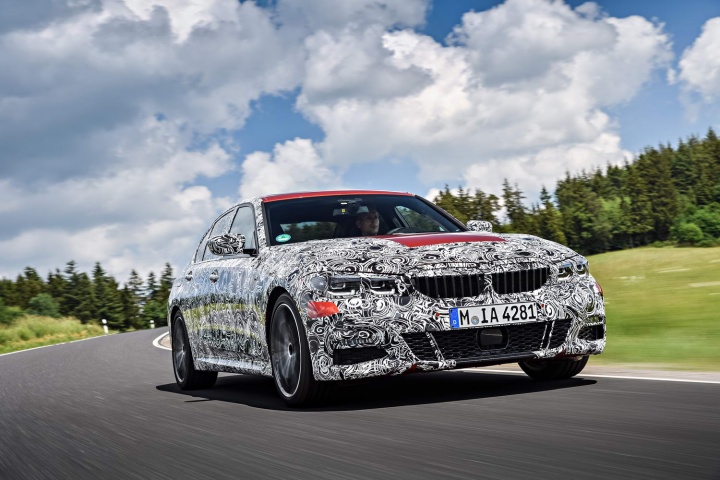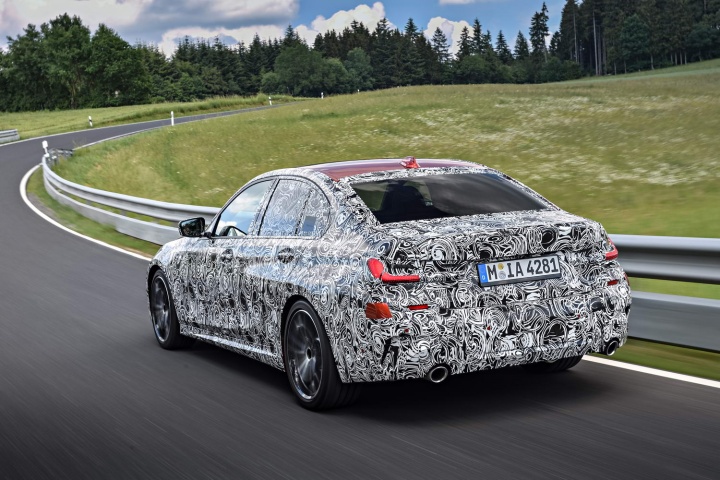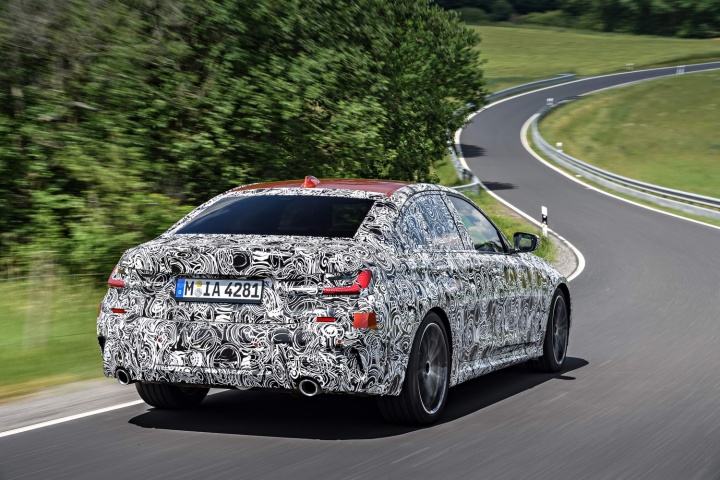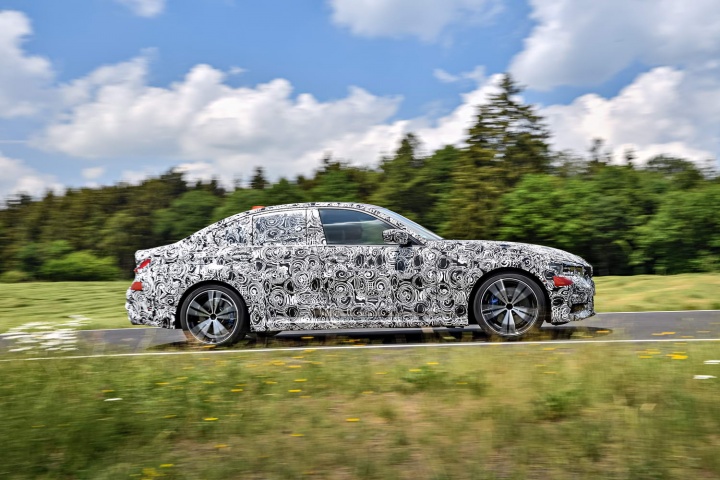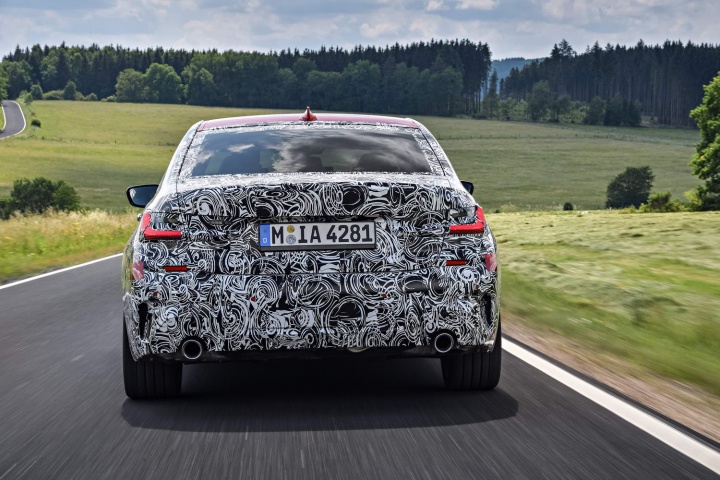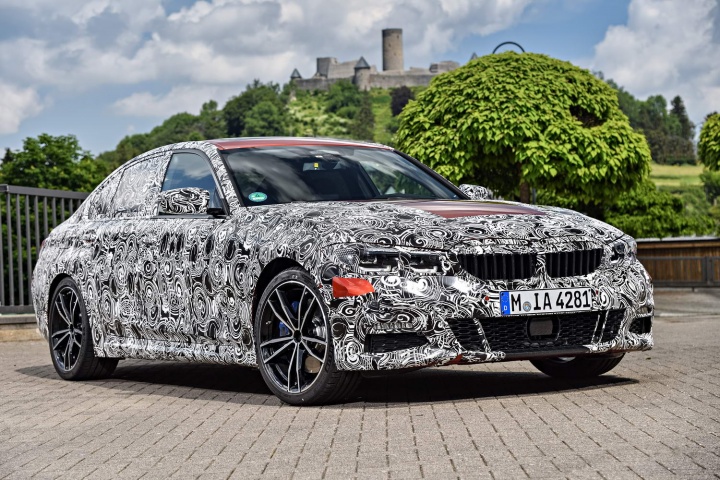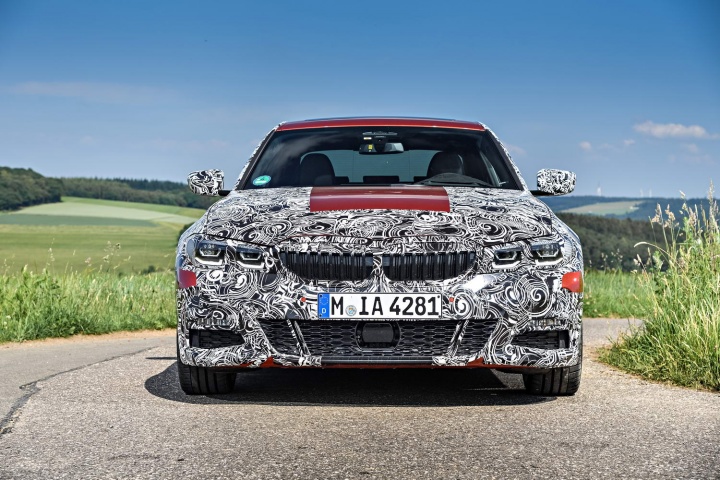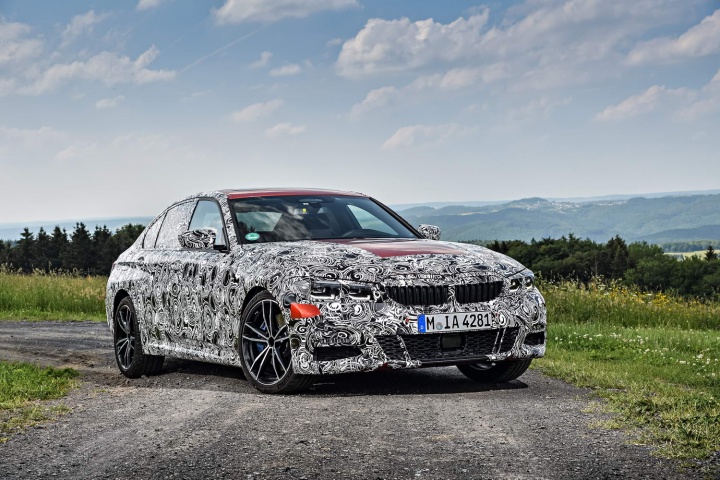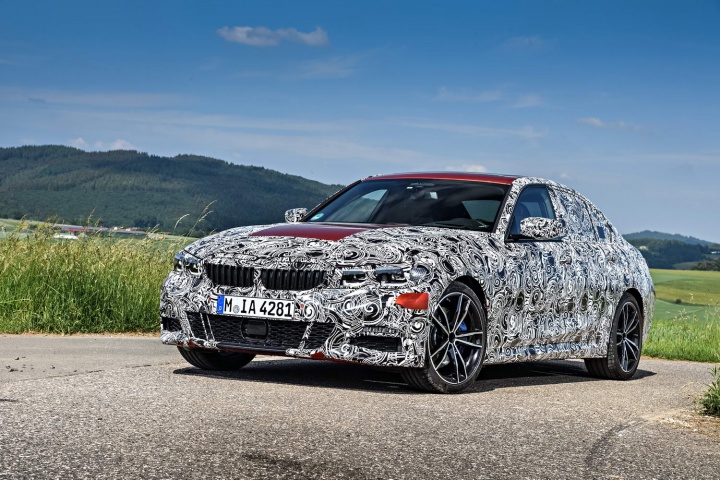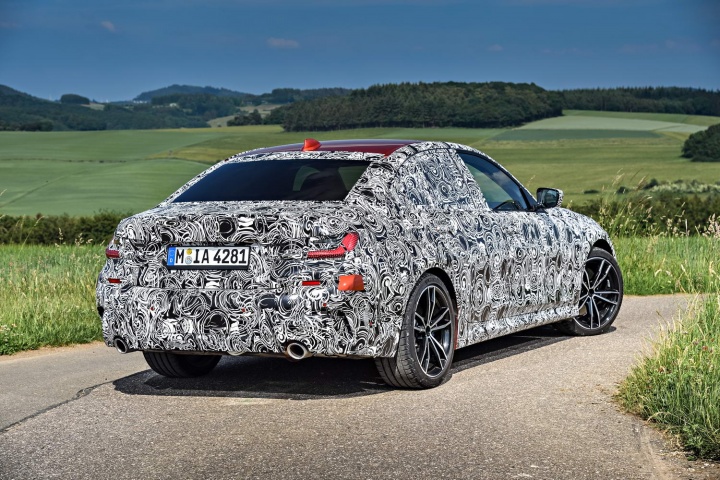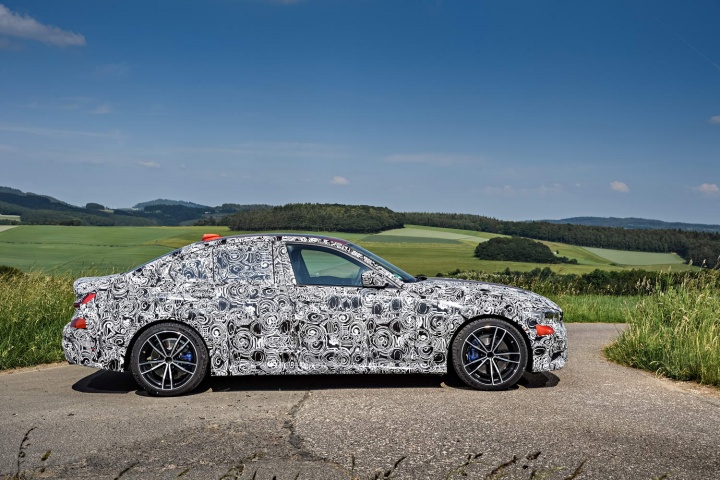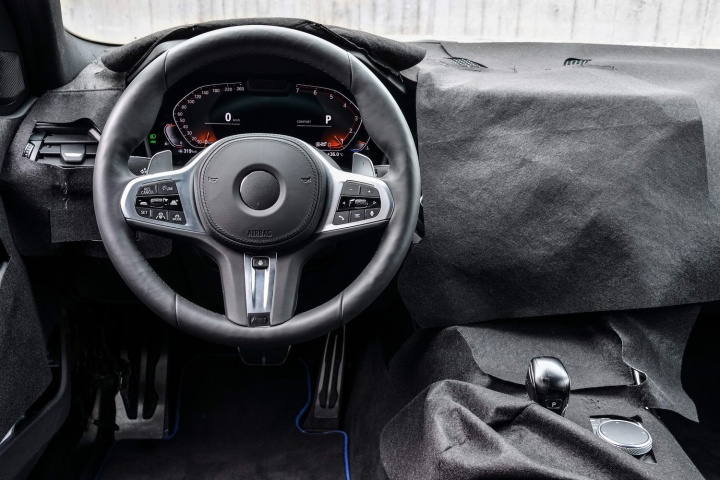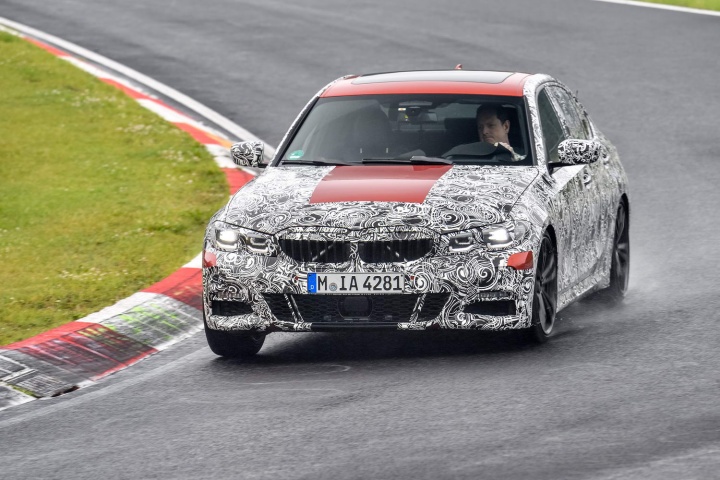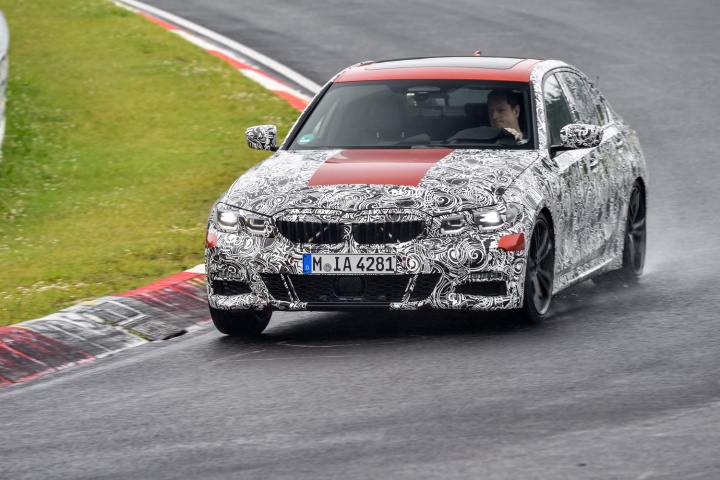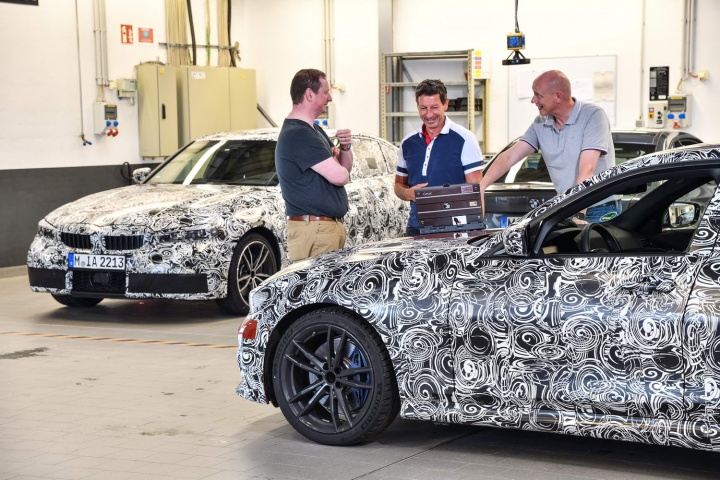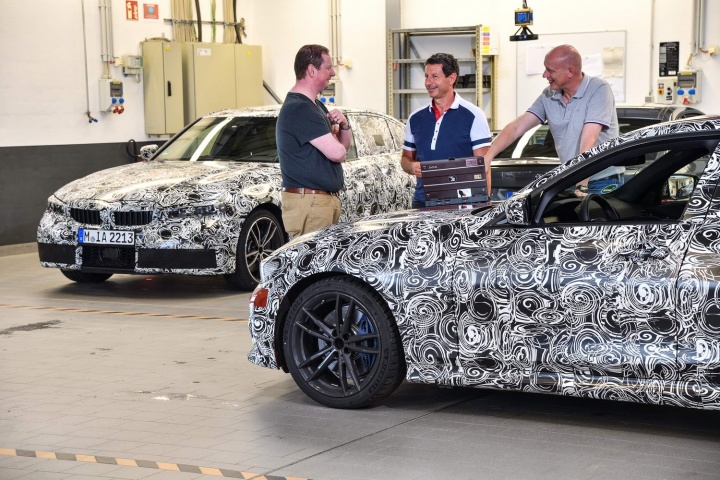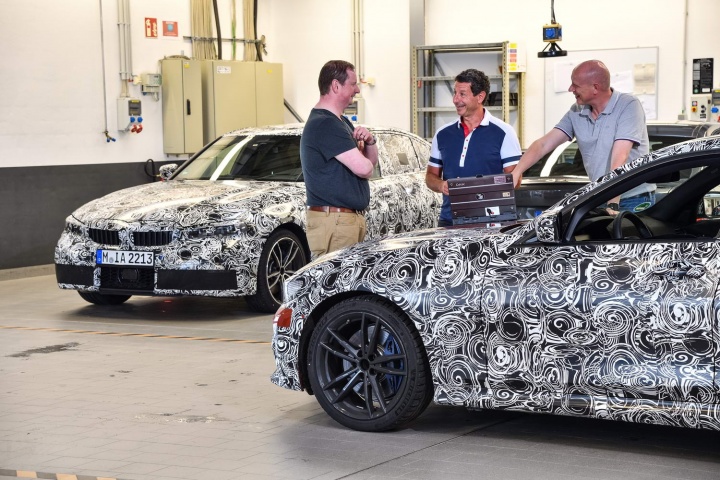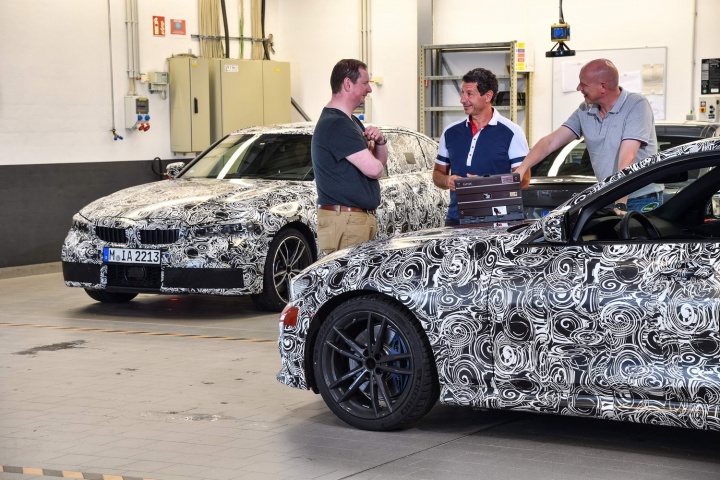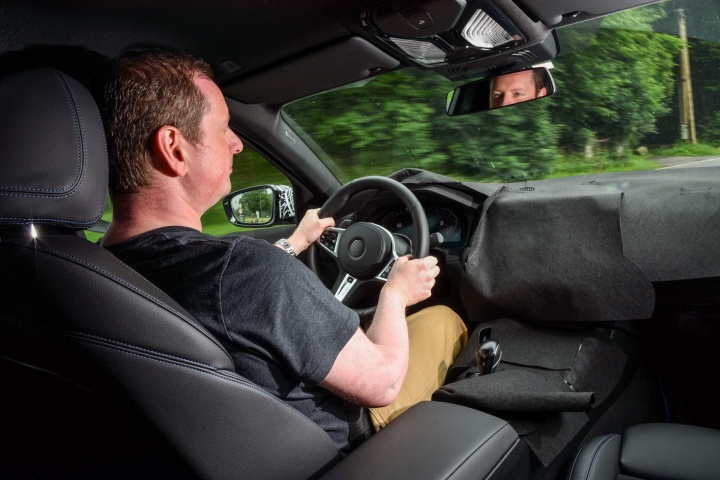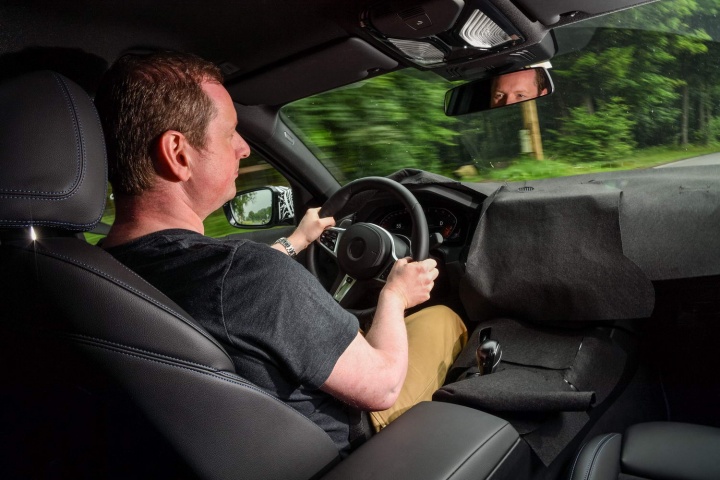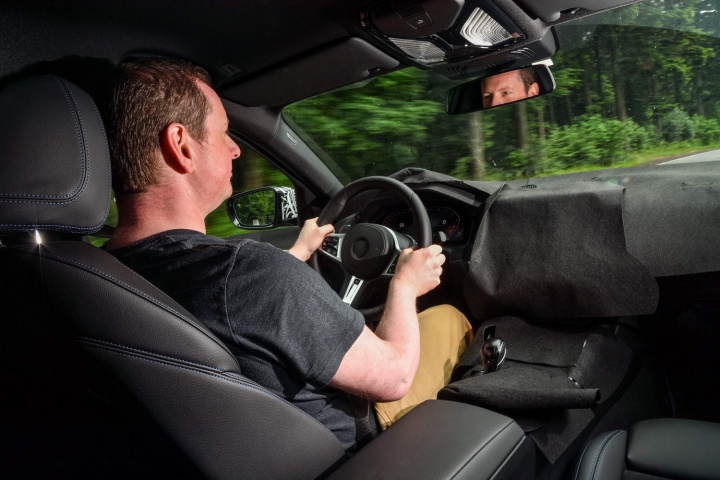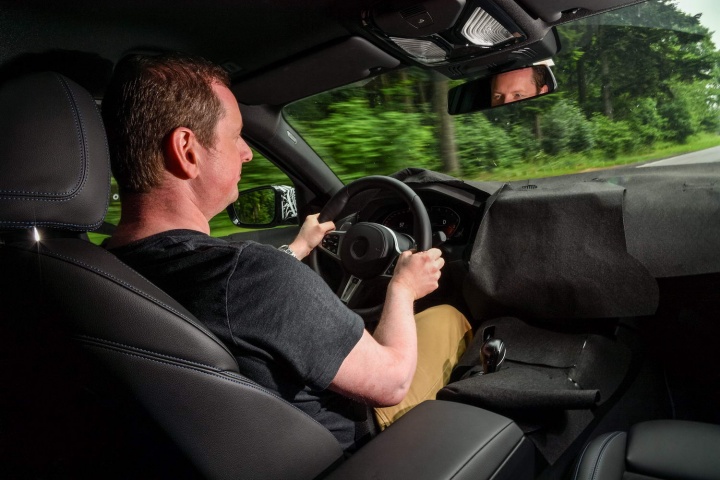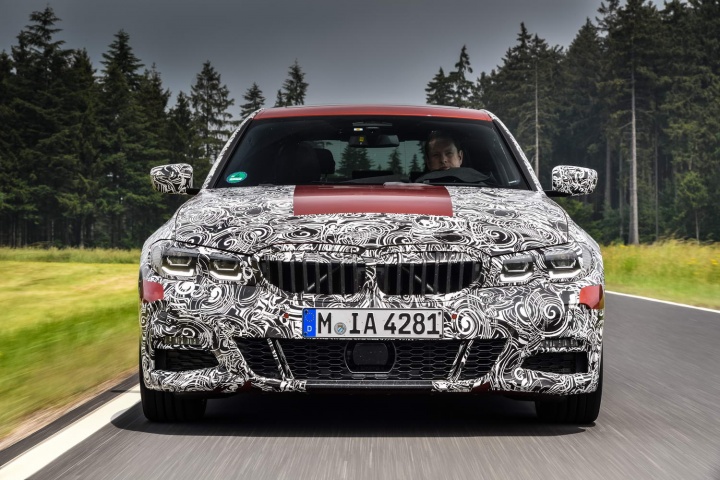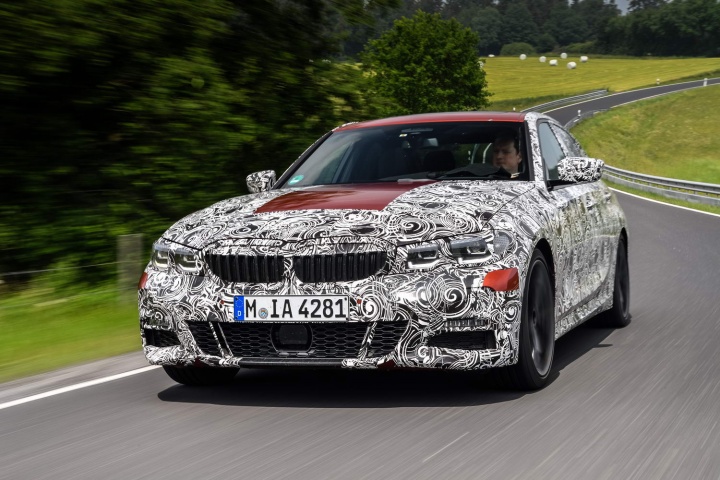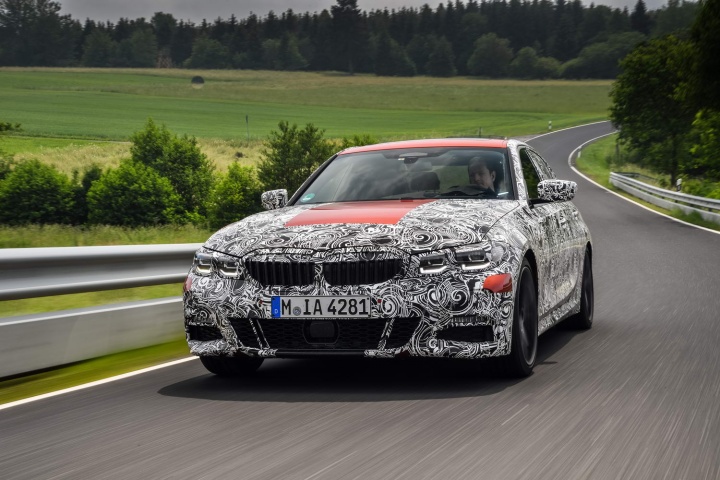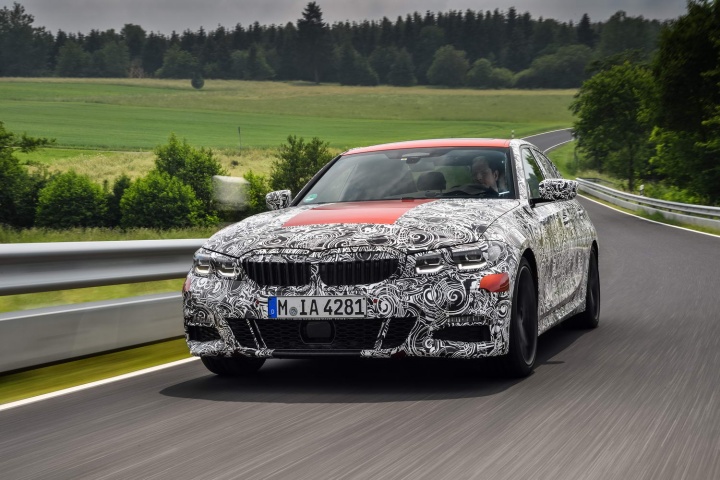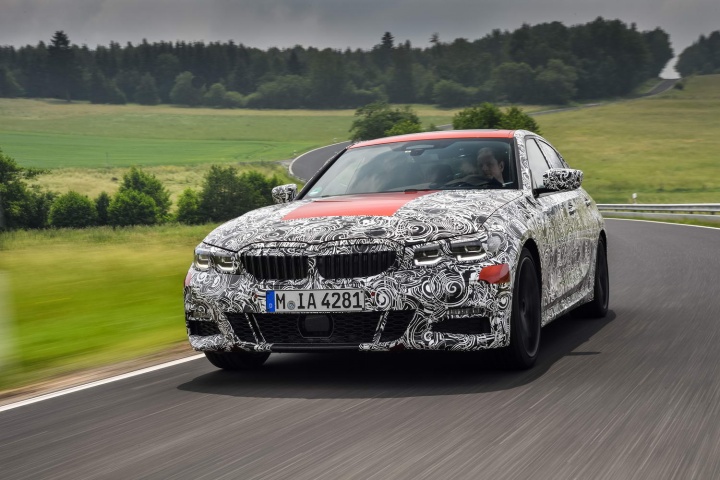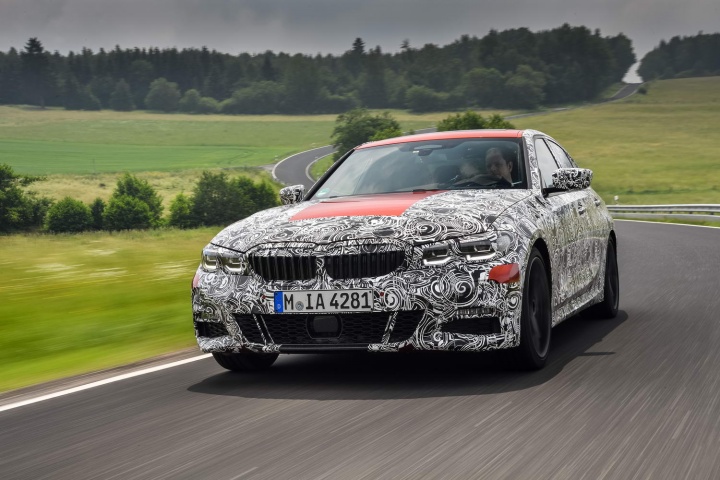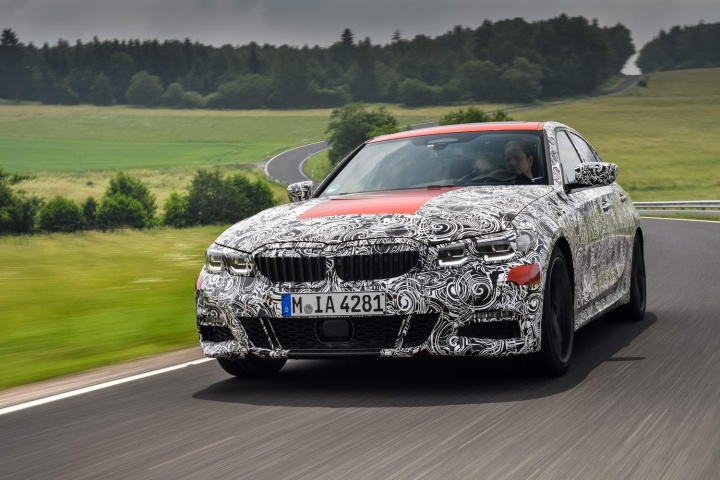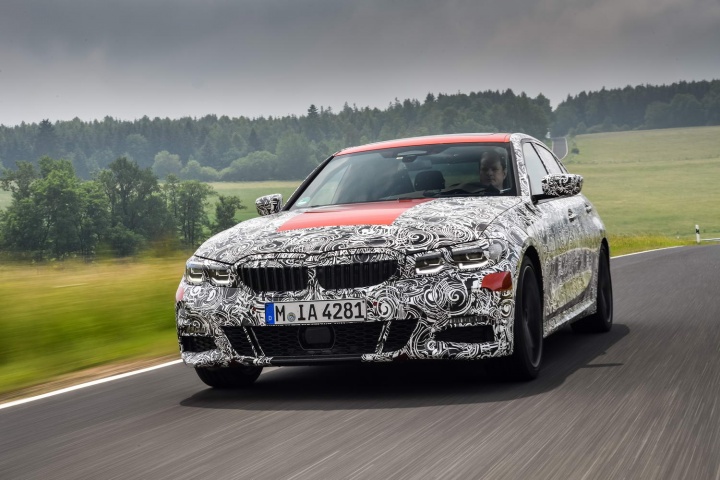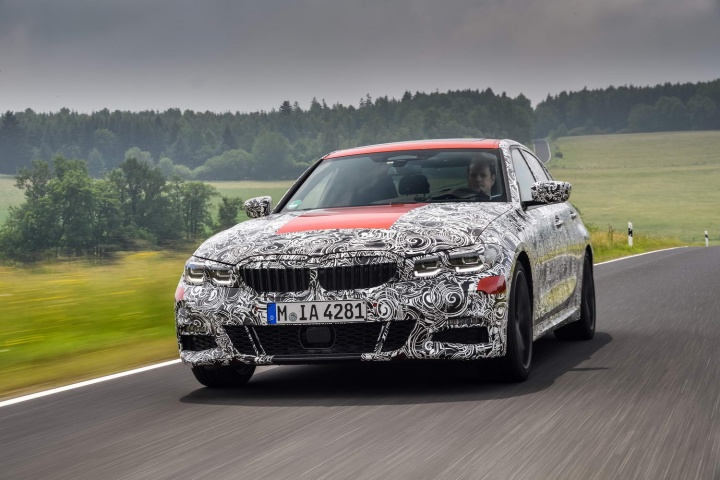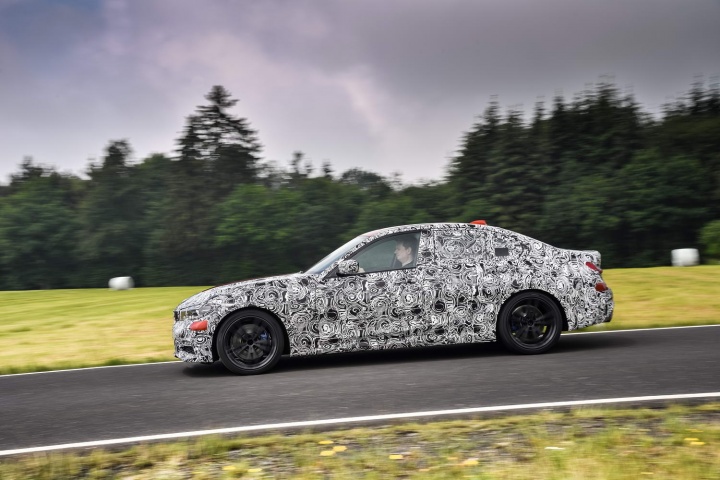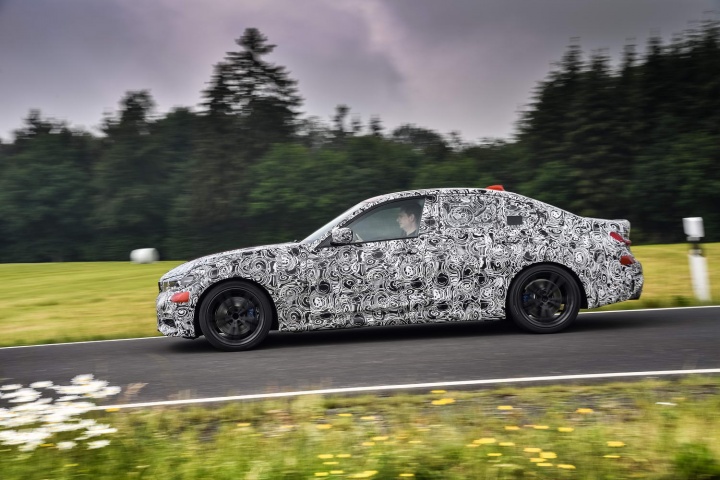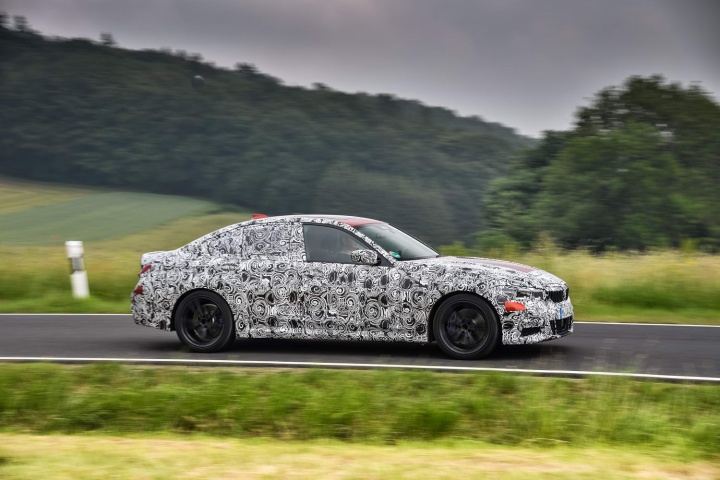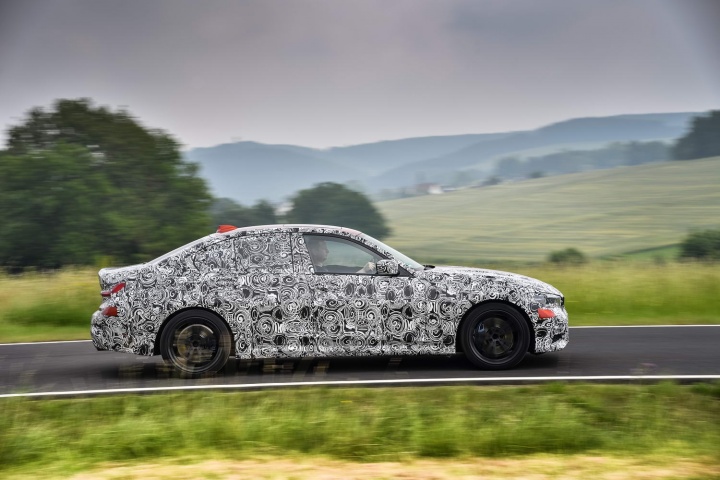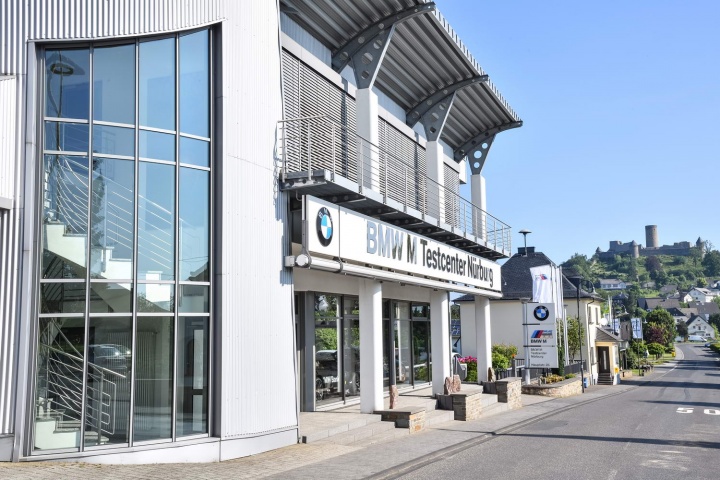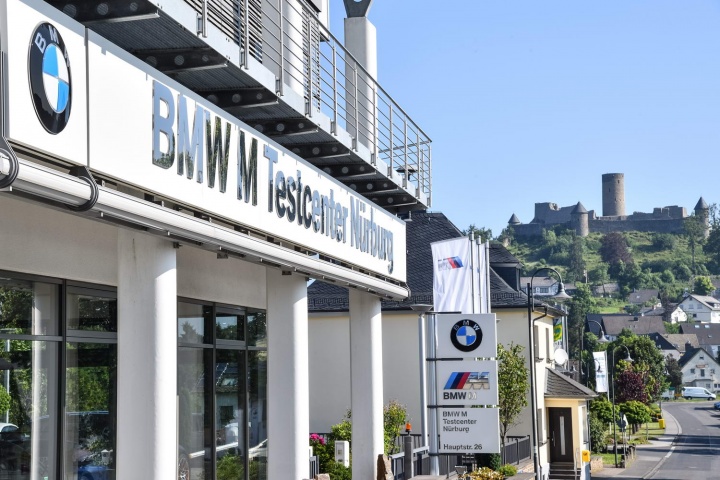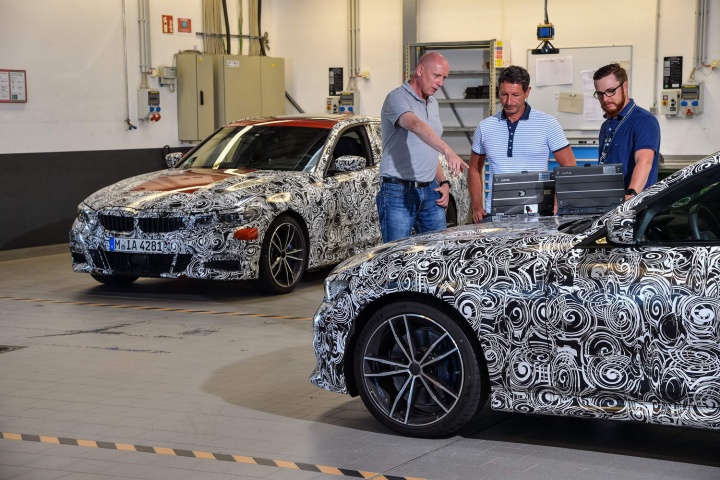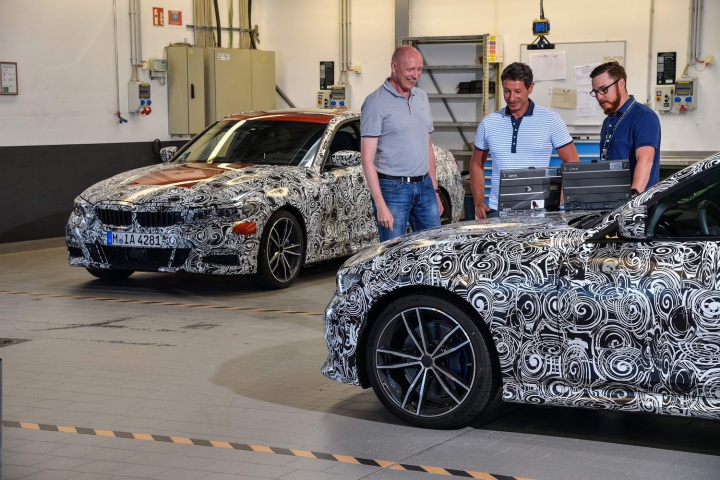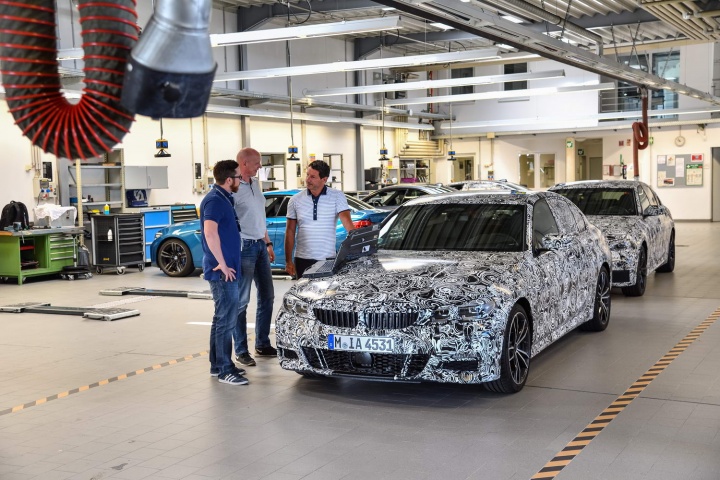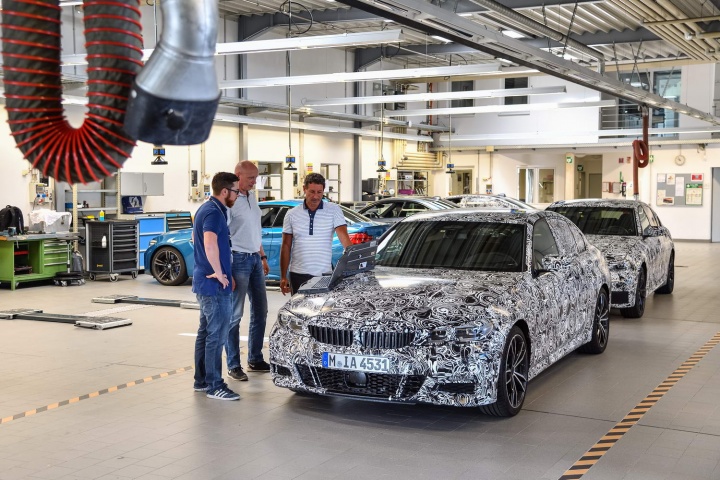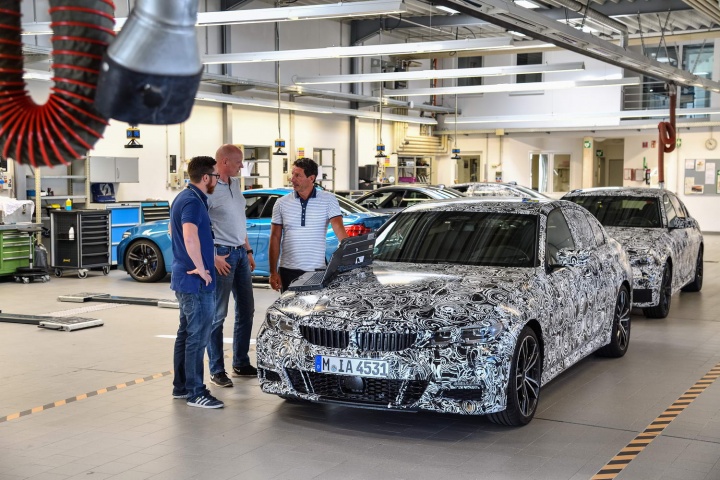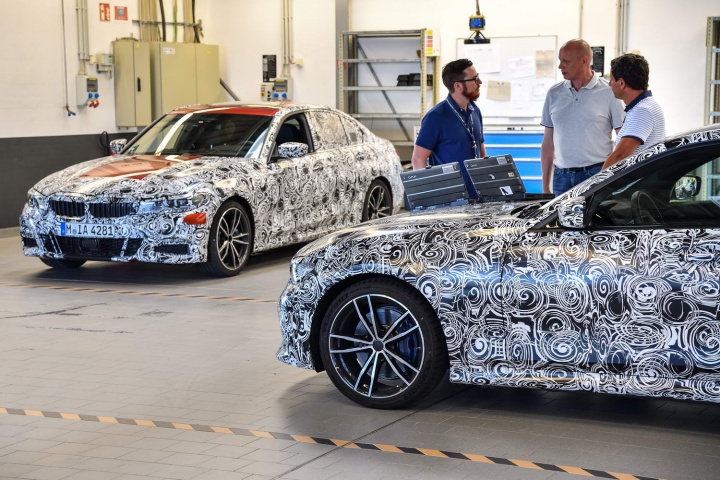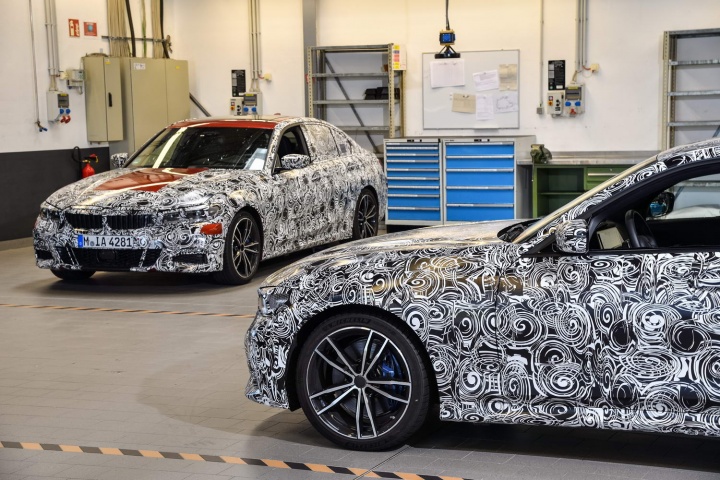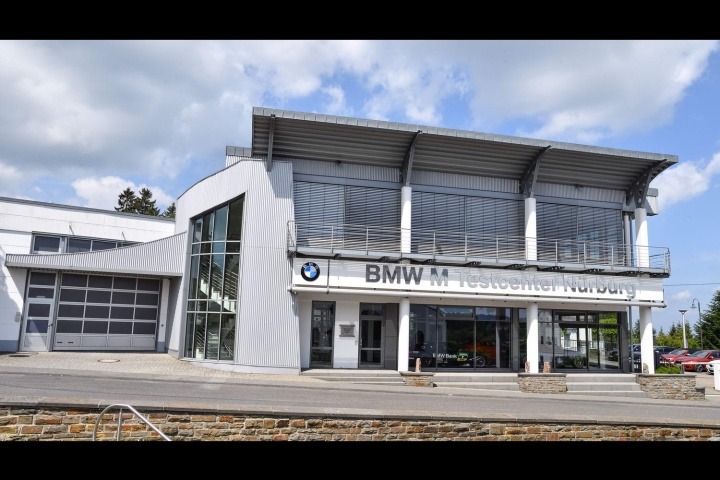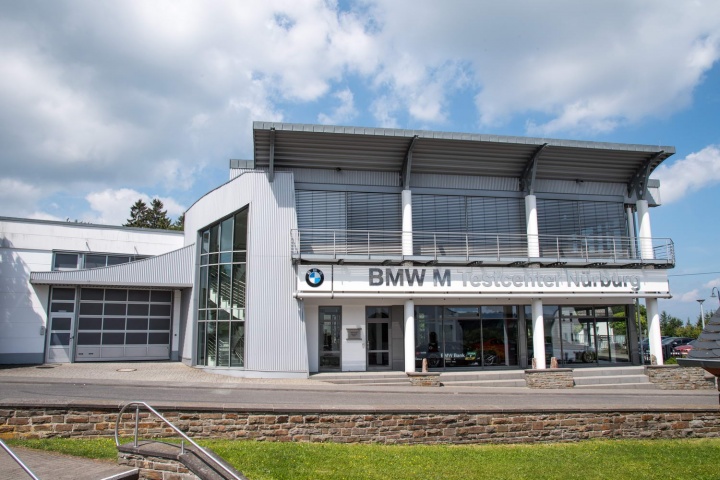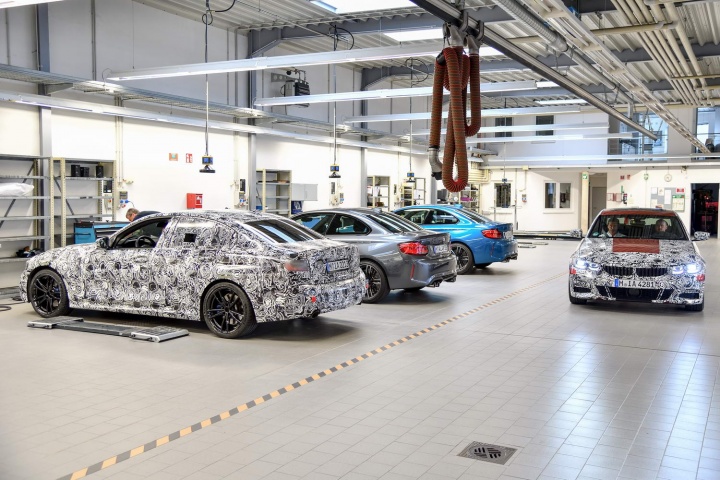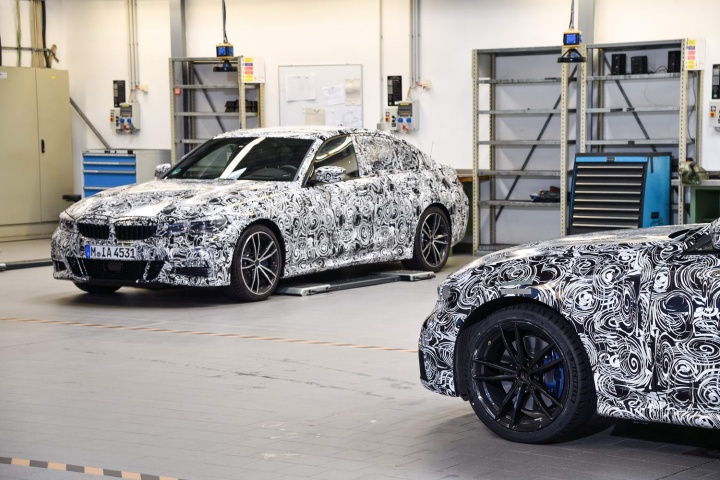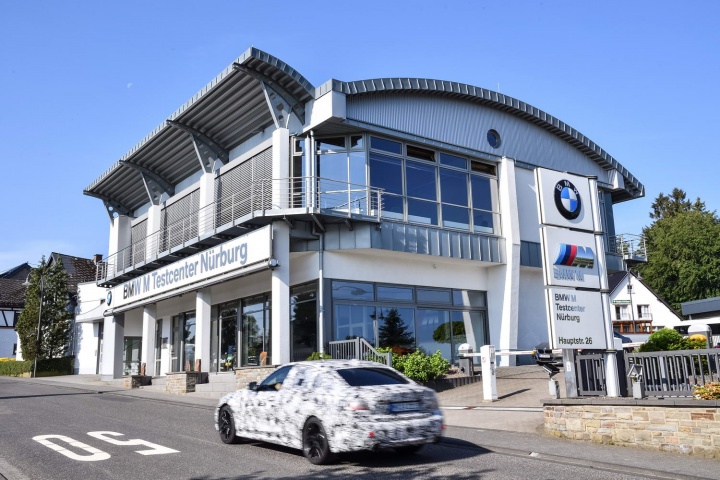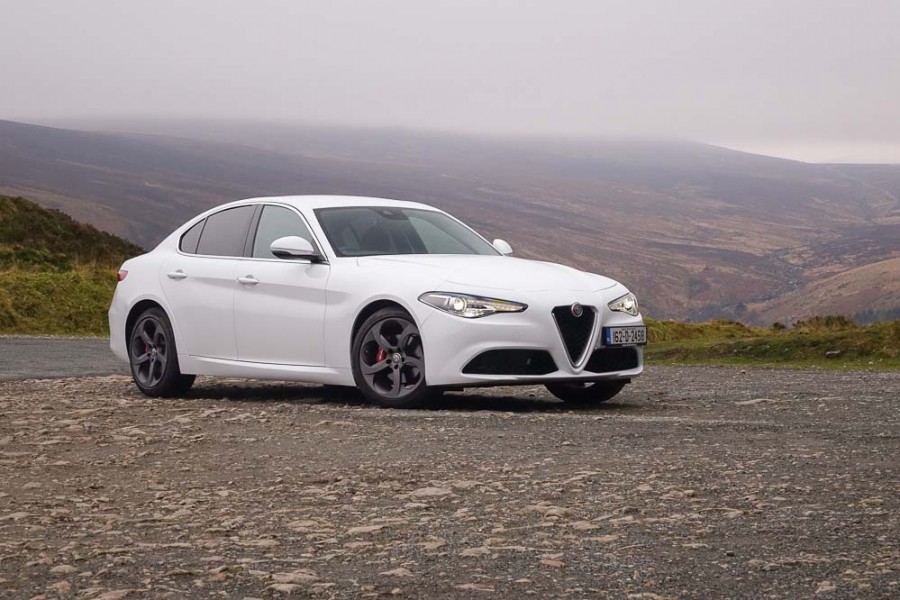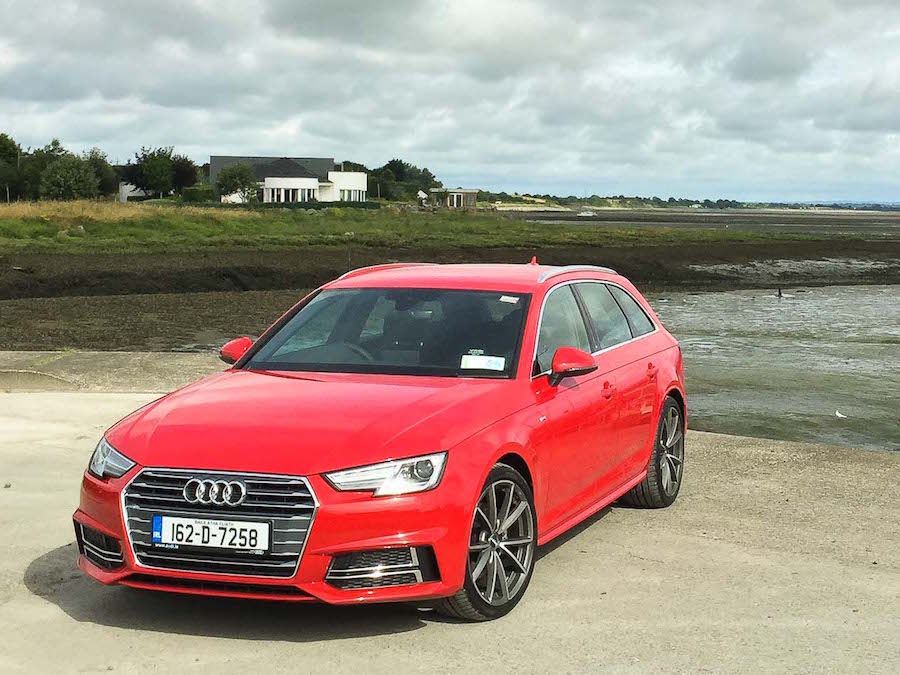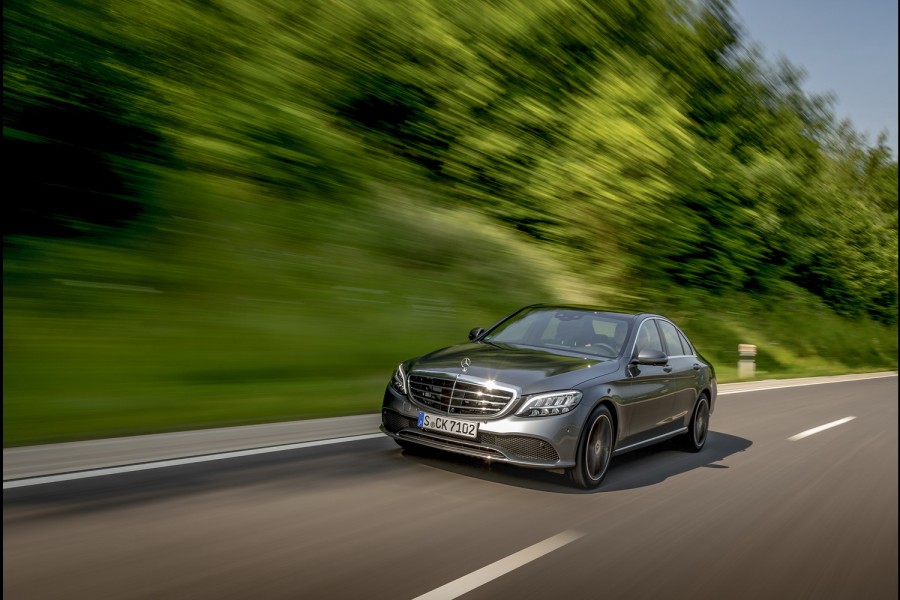Details are scant, and we haven't fully seen it in the flesh yet, but BMW's new 3 Series is looking like a serious class king on this showing. Clever engineering underpins old-school handling and steering feedback.
In the metal
Technically, we haven't actually seen the new BMW 3 Series 'in the metal' yet. Oh sure, we've stood next to it, sat in it, driven it, but all the time the exterior panels were swathed in a swirly, jagged, camouflage tape, and the cabin was mostly covered up by big strips of heavy felt cloth. So, we kind of can't really give it a rating in this area yet, but we can tell you what we know so far...
This is the G20 3 Series, and that makes it the seventh generation of BMW's evergreen sports saloon. As before, it will compete with the likes of the Mercedes-Benz C-Class and Audi A4, as well as more recent class interlopers such as the Alfa Romeo Giulia, the Lexus IS 300h and the Jaguar XE. Competition is hot in this sector and, in spite of the rise and rise of SUV sales, BMW still sells more than 400,000 3 Series every year around the world, so it's a critical model for the company from Munich.
Which means that no expense has been spared here, and no stone left sitting still, free of turnover. The platform is BMW's 'CLAR' matrix, related to that of the 5 Series, 7 Series and X3, but in reality it's more a box of similar components, which share common factory-friendly hardpoints and an underlying electrical architecture. While BMW hasn't been too forthcoming with the tech specs as yet, we do know that this G20 is a little longer and wider than the outgoing F30, but it is some 55kg lighter, model for model.
It also comes with something of a chassis revolution for BMW, as it sees the introduction of hydraulic bump stops for the suspension. Rather like Citroen's 'Progressive Hydraulic Cushions', these take the place of the old rubber bungs at the top of the suspension travel, and instead use reservoirs of hydraulic fluid, into which slide pistons attached to the top of the dampers. These allow a softer absorption of bumps at the limit of suspension travel, and also a gentler return motion, which should make the 3 Series much more comfortable when it's being driven on really poor roads (more on which in a moment).
M Sport versions get lower, stiffer springs and larger 19-inch alloy wheels, as well as a new electronically controlled rear differential, related to the one used by the M3 super-saloon, but obviously with a less aggressive attitude. M Sport models also get slightly bigger brakes and a variable-ratio steering rack.
As far as what styling we can see goes, it seems very much like a gentle evolution of the current 3 Series with a couple of key changes. The most obvious change is the addition of much slimmer headlights, which peer out from a under the leading edge of the bonnet, and which appear almost impossibly shallow. Even the daytime running light 'halo' signatures have been chopped off to allow for the slimmer profile. At the back, the boot and wings seem to be a little fuller-figured, and less flat-looking than those of the current model.
The cabin feels very familiar for the most part - the same low-slung driving position, the same slim, but comfortable, seats. The instruments are all new, though - a black panel digital layout, which ditches the fixed chrome rings of BMW's current digital instruments, and which has main dials that swoop around the outside edges of the panels, leaving the centre free for satnav or trip computer info. There's a good head-up display too, and the central touchscreen retains both the 'tile' layout we've seen of late, and the trusty iDrive click-wheel on the centre console.
Again, we're groping in the dark here, thanks to those heavy fabric cover-up panels, but the switches do look different, a development of what we've seen in the 7 Series, and space feels objectively slightly better than it does inside a current F30 model.
Driving it
How important is this car to BMW? Hugely. Oh sure, the X-model SUVs are a handy cash cow and big sellers, all. But this is the heart of the brand, this is the car that people think of as the core of BMW, and the guys in Munich know it. Jurgen Brack is the head of functional design, driving dynamics for the 3 Series and as he puts it to us: "For sure, the SUVs are important now, and we have some very good ones. But if you ask anyone what is a BMW, what defines the brand? They say 3 Series. Maybe sometimes 5 Series too, but almost always 3 Series."
So, if it's going to live up to the legend of the brand, it's going to have to drive well. Better than well. Very, very well.
Let's cut to the chase; it does. Utterly outstanding in one particular area, with only a couple of caveats in others. The competition is fierce right now, with the just-updated Merc C-Class sitting at the top of this segment, and the likes of the fun Alfa Giulia poaching on the 3 Series' patch, but on the basis of this test, the new 3 Series has the potential to sweep them all aside.
What hits you first is the steering. I'm sent out for an initial drive on public roads close to the Nürburgring race track in Germany. BMW's engineering facility here, where all its cars have their chassis developed and tweaked, is our base for the day and sitting alongside me is Mischa Bachmann, a BMW electronics expert whose job it is to create and hone the software that governs the electrically power assisted steering (EPAS) of the 3 Series. EPAS has been the bane of enthusiastic driving for years now, rarely feeling anything other than artificial, and often filtering out and smothering information that would have flowed to your fingers from the front tyres with an old-school hydraulic steering system.
Mischa's job today is to keep tweaking ("It can be hard to tell sometimes when you've got it just right, and if you keep going you might actually be making things worse" he confides.) and he's noodling away on a laptop as we drive, altering the software to give me a taste of different steering setups. The effect is profound - the steering alternating between 1980s-Jaguar-light and first-gen-BMW-X1-heavy-and-gloopy.
We eventually settle on something that feels light enough to not be tiring nor obstructive, but weighty enough to give you enough resistance for confidence in a fast corner. Whatever the setting, though, the feel and feedback is amazing. Genuinely amazing. We've driven some very impressive EPAS systems of late (Porsche's rack for the Boxster GTS springs to mind), but this is at another level. You can actually feel the individual tread blocks of the front tyres deflect and rebound, if you concentrate, and the transmission of how much grip you have to play with is exceptional. Which is helpful, as it's sluicing down with heavy rain, and the road we're on is winding between some very solid looking trees.
In spite of the conditions, the 330i model we are driving eats up the road. BMW still hasn't confirmed final figures for this updated 2.0-litre turbo petrol engine, but it will have around 6hp more than before, and an extra 50Nm of torque. The added lightness of the body will help it on the efficiency front too, and should give it Band B2 emissions, and close to 50mpg on the combined fuel economy cycle, which could make it a viable alternative to diesel.
It's certainly brisk enough, good enough for a sub-six-seconds run to 100km/h from rest and just really lacks a truly inspiring soundtrack if it's to achieve outright greatness. It's fine - refined and smooth, but not aurally exciting.
The whole car is very refined, though. BMW says that it has worked exceptionally hard on interior quietness, and a brief run down a stretch of high-speed Autobahn, made of rough-faced concrete, shows that this has paid off. It's much quieter inside, especially in terms of tyre noise, than would have been an old F30 3 Series.
The real challenge was to come. Remember I said we were based next to the Nürburgring? The famous, infamous, 'Green Hell' that spears through the forests of the Eifel Mountains for 20km of unrelenting corners, blind crests, and locations where Niki Lauda almost got burned to death. Yeah, that Nürburgring. And it's still hosing down with rain, a faint mist of tyre spray from previous laps still clinging to the tree tops.
Leading me, in a BMW M2 Coupe, is Thomas Kafer, head of integrated applications at BMW, and for whom this is his fourth generation of 3 Series. Thomas is a chassis dynamics expert, and boy does he ever know his way around here, and it shows. His blue M2 takes off fast, and slithers sideways around the first couple of corners, where tree mulch mixed with rain has made the track extra-extra slippery. With the 330i mirroring his slips and broadsides, I try to follow.
Now, following an M2 around the Nürburgring, even in perfect weather, would be hard enough for an average family saloon. Doing it in biblical levels of rainfall, with my ham-fists doing the steering should make it impossible, but the 330i steps up. That fabulous steering feel becomes the car's get-out-of-jail-free card. Even with my sluggish reflexes, changing grip and traction levels are so clearly telegraphed that, with the stability control working overtime to help me, they can be caught and accounted for almost before they've begun. The 3 Series' balance is such that the front slides first, with a bit of gentle understeer, before the rear chimes in, pushing through a four-wheel drift into a full on power slide if you keep pushing the pedal.
Any other deliberations will have to wait for a drier, more familiar road. The Nürburgring in the wet is no place to be taking handling and dynamics liberties, and rather than concentrating on the minutiae of chassis responses, I was mostly just mumbling "don't die don't die don't die don't die" over and over again. The 330i, though, felt right at home. We were reaching the limits of my own abilities long before we reached its.
What you get for your money
We simply don't know yet what the 2019 BMW 3 Series will cost. It's more than likely that the existing SE and M Sport trims will be carried over, although with the extra toys (lower suspension, differential, variable steering) M Sport might end up being a bit more expensive than before. Equally, we saw a big jump in the base price of the current 5 Series relative to its predecessor, so the 3 could follow suit, albeit with extra equipment as standard (probably including those hydraulic suspension stops). The range should kick off with 316i and 316d models using the three-cylinder turbo 1.5 engines, in petrol and diesel form, lifted from the 1 Series, while this time around there will be two plug-in hybrid models - a 330e based on the current 2.0-litre petrol turbo engine, but with a bigger battery for a possible 80km one-charge range; and a more basic version (maybe badged 325e?) using the 1.5 turbo and electric motor setup from the BMW 225xe and MINI Countryman Cooper S E, with a 50km battery range.
Summary
It's still a little hard to get a handle on just how good, bad, or indifferent the new BMW 3 Series is. We've driven one engine, one chassis setup, and can't actually yet tell you what it looks like. But... on the basis of what we have seen and driven, BMW could well be looking at a new class champ here. The steering alone might be enough to put it on top. As for the rest, there's not much longer to wait...

